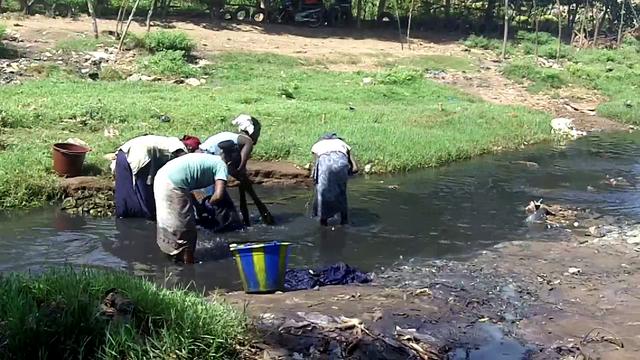Mali's Second National Communication - June 2011
Project Overview
The creation of a National Communication offers countries the opportunity to contribute with technically sound studies and information that can be used for designing mitigation and adaptation measures, and project proposals that can and will help increase their resilience to the impacts of climate change. Activities generally include: V&A assessments, Greenhouse Gas Inventory preparation, Mitigation Analysis or Education, and awareness raising activities. The ultimate goal is the integration of climate change considerations into relevant social, economic and environmental policies and actions.
Key Vulnerabilities:
- Agriculture/Food Security
- Water Resources
- Public Health
- Fisheries
- Land Resources
- Biodiversity
Project Details
Mali is located in western Africa at a latitudes of 10 to 25°N, straddling the sub‐tropical band called the Sahel. The northern parts of Mali reach well into the dry Sahara desert, while the southern regions experience a wetter, more tropical, climate.
The seasonal rainfalls in Mali are controlled by the movement of the tropical rain belt (also known as the Inter‐Tropical Conversion Zone, ITCZ) which oscillates between the northern and southern tropics over the course of a year, and brings rainfall to the southern regions of Mali when it is in its northern position between June and October, peaking in August. The average rainfall in the wettest (southernmost) regions at this time is an average 300mm per month, but rainfall totals diminish rapidly with increasing latitude. In the dry months between November and March, almost no rain falls at all. Variations in the latitudinal movements of the ITCZ from one year to another cause large inter‐annual variability in wet‐season rainfall, which means that Mali suffers from recurring drought. The northern, desert regions of Mali receive very little rainfall all year round.
Source: University of Oxford, School of Geography and the Environment. Accessed on 23 November 2009 at: http://country-profiles.geog.ox.ac.uk/.
Key Results and Outputs
- Sustainable development and the integration of climate change concerns into medium- and long-term planning
- Inventories of anthropogenic emissions by sources and removals by sinks of greenhouse gases
- Measures contributing to addressing climate change
- Research and systematic observation
- Climate change impacts, adaptation measures and response strategies
- Education, training and public awareness
Potential Adaptation Measures:
Agriculture and Food Security
- Educational & outreach activities to change management practices to those suited to climate change
- Switch to different cultivars
- Improve pest and disease forecast and control
Water Resources
- Increase water supply, e.g. by using groundwater, building reservoirs, improving or stabilizing watershed management, desalination
- Decrease water demands, e.g. by increasing efficiency, reducing water losses, water recycling, changing irrigation practices
- Develop and introduce flood and drought monitoring and control system
- Improve or develop water management
Reports and Publications
Assessments and Background Documents
Mali's Second National Communication - Official Document (French) - June 2011
Monitoring and Evaluation
In 1992, countries joined an international treaty, the United Nations Framework Convention on Climate Change, to cooperatively consider what they could do to limit average global temperature increases and the resulting climate change, and to cope with whatever impacts were, by then, inevitable.
Parties to the Convention must submit national reports on implementation of the Convention to the Conference of the Parties (COP). The required contents of national communications and the timetable for their submission are different for Annex I and non-Annex I Parties. This is in accordance with the principle of "common but differentiated responsibilities" enshrined in the Convention.
The core elements of the national communications for both Annex I and non-Annex I Parties are information on emissions and removals of greenhouse gases (GHGs) and details of the activities a Party has undertaken to implement the Convention. National communications usually contain information on national circumstances, vulnerability assessment, financial resources and transfer of technology, and education, training and public awareness.
Since 1994, governments have invested significant time and resources in the preparation, collection and validation of data on GHG emissions, and the COP has made determined efforts to improve the quality and consistency of the data, which are ensured by established guidelines for reporting. Non-Annex I Parties receive financial and technical assistance in preparing their national communications, facilitated by the UNFCCC secretariat.




